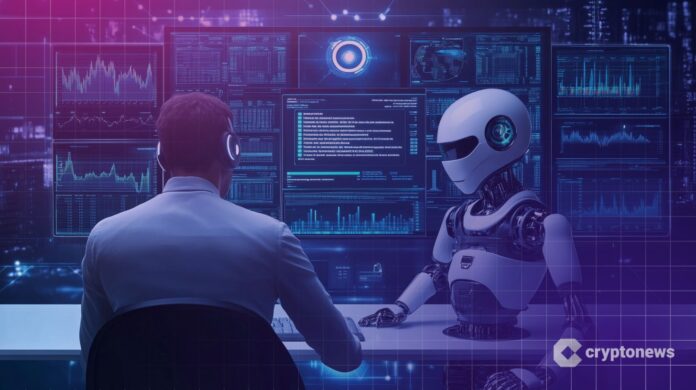Introduction to AI in Digital Asset Markets
The digital asset markets are known for their speed, volatility, and limitless nature. The exchange operates in an environment characterized by constant movement, where price fluctuations, liquidity shocks, and new forms of manipulation can arise in a matter of seconds. To keep up with this pace, the ability to adapt in real-time is crucial, and this adaptability is increasingly powered by Artificial Intelligence (AI).
From Reactive to Real-Time: Rethinking Liquidity Management
When liquidity collapses, markets break with it. Conventional liquidity management reacts to stress, but AI turns this model upside down. Intelligent systems analyze live order book data, sentiment trends, and macro triggers to predict where and when liquidity pressure is likely to build up. For instance, AI models can recognize patterns that precede order book development, such as cluster formation of sell orders, unusual slippage, or changes to counterparty behavior. If these signals occur, the system can act immediately, adjusting spreads, adapting depth, or provisioning liquidity from reserves without waiting for human input.
Getting Ahead of Market Manipulation
Market manipulation has evolved, and bad actors now use automation to coordinate across tokens, accounts, and platforms, carrying out strategies designed to fly under the radar of static rule-based systems. AI brings a new level of visibility, scanning trades, building behavioral profiles, and identifying subtle deviations. If a normally inactive token suddenly sees a pattern of small coordinated trades before a large movement, AI can recognize it as the early stage of a pump and dump, triggering warnings, restricting activities, or freezing risk-exposed accounts before the broader market feels the effect.
Scaling Compliance and Risk Without Compromise
Every exchange wants to scale, but as the number of users grows, so do regulatory expectations and security risks. Manual compliance workflows, stacked risk ratings, and rule-based fraud monitoring quickly become bottlenecks. AI solves for scale, operating KYC and AML processes that analyze real-time data across borders, adjusting margin requirements dynamically for real-time volatility, and preventing cascading in turbulent markets. Support systems expanded with AI can react faster than human teams, resulting in better risk coverage, lower operational overhead, and a smoother user experience.
Making Trust Transparent
AI is often framed as a black box, but one of its most important contributions is transparency. Any liquidity adjustment, fraud flag, or margin calibration carried out by an AI system can be logged with complete context, creating a checkable path for internal teams, regulatory authorities, and users. This ability to prove that decisions are made based on real-time data, not human discretion, becomes a competitive advantage, reducing regulatory friction, building dealer trust, and setting a new bar for responsible, data-driven market infrastructure.
AI as Infrastructure, Not Add-On
It’s tempting to talk about AI as if it were a feature, something overlaid on an existing system. But exchanges that will lead the next decade think differently, embedding AI into the core of their operations: liquidity, compliance, risk, security, and support. This is not about flash; it’s about function. AI enables exchanges to react faster, work smarter, and make clever decisions on a scale, which is not optional in a market that operates around the clock, with billions moving in seconds.
What Comes Next
The financial markets are interconnected, and risks – whether operational, structural, or external – will appear faster and harder. Resilience won’t come from being the fastest to respond; it comes from building systems that can adapt in real-time. This is the role AI plays: transforming exchanges from reactive to proactive, from static to adaptive, from surveillance to intelligence. The message to the industry is clear: if we want safer, more stable, and more transparent markets, AI is not a bonus – it’s the foundation.

